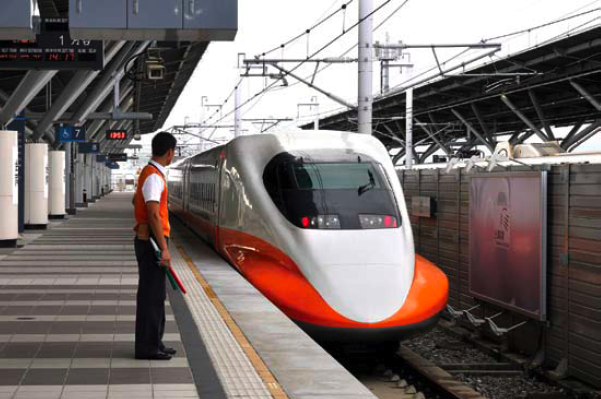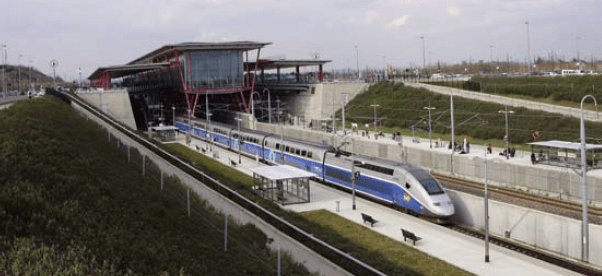The issue of privatization of public infrastructure was polarizing enough before the recent House proposal to take the Northeast Corridor away from Amtrak and turn it over to private firms. The privatization plan has its champions, who say it's the only way to save high-speed rail, and its detractors, who call it a death knell for even the rail service we currently have.
In the middle are those who acknowledge that high-speed rail can't be built in this country without some private funds, but that the government should still carefully control the process. A new report from the U.S. Public Interest Research Group, released yesterday, walks that center line. Better yet, it gives examples from around the world of how privatization has worked -- and how it hasn't. And it maintains that the question is not so much whether or not to involve the private sector, but how to craft the terms of the agreement so that the partnership adds value -- not increased risk -- for the taxpayer.
“Private financing can be a supplement but not a substitute for public support of high-speed rail,” said Phineas Baxandall of U.S. PIRG.
Indeed, it is clear that public and private actors are going to have to cooperate in order for the U.S. to realize its high-speed rail ambitions in California and elsewhere. But the government agencies negotiating the terms of these agreements will have to be very diligent to avoid compromising the interests of public-sector investors (taxpayers) and the purpose of the project overall, says PIRG.
"It's attractive to politicians who may want to be champs for high-speed rail but who at the same time want to be against spending any new money for it," said Baxandall. "Public-private partnerships have been a way to wave a magic wand to say 'we’re going to build it, we're just not going to pay for it. Somebody else is.'"
What this report shows, he said, is that the public sector has to be the "anchor" in these projects. "Public-private partnership isn’t just an easy way to make something happen without effort," he said. "It takes a lot of planning."
And private capital comes with some inherent risks. For example, in Great Britain in the 1980s, a public-private partnership which granted private control over rail lines established contracts in a way that incentivized private companies to delay maintenance. Ultimately, this led to a train derailment that killed four people.
Meanwhile in Taiwan, over-reliance on private investors forced the government to bail out the majority owner of its national high-speed rail line when a financial crisis interrupted private capital markets in the late 1990s. The terms of the debt the private firm had incurred were much less favorable than the terms a public entity would have gotten, driving the costs up. Unraveling the layers of liability after the fact with teams of lawyers ended up costing far more than it would have for the government to have run the system itself in the first place. For a country trying to build rail lines with exclusively private funding, this was a hard lesson in the pitfalls of private participation.

Given the myriad potential pitfalls, it's not surprising that internationally, public-private rail projects have a mixed track record. To help government agencies sort through these complicated agreements, PIRG has issued a series of recommendations for protecting the public interest in public-private rail partnerships.
For example, PIRG says that government agencies must reconcile the profit motivations of private-sector investors with the motivations of the public for improved transportation infrastructure. This can be accomplished through the use of detailed, rigorous standards governing contractor performance. Furthermore, the report notes, public agencies should not pursue public-sector investment unless it can be determined that such investment will add public value to the project. This can be impartially determined using a public sector comparator (PSC) test, a sort of cost-benefit analysis.
The report warns about "illusory" savings provided by private firms simply by avoiding wage requirements, a tactic which simply "externalizes costs" and "transfers benefits." In addition, PIRG says, government entities must ensure that they are entering a public-private partnership for the right reasons -- not just to foist politically unpopular decisions onto an unaccountable private actor.






